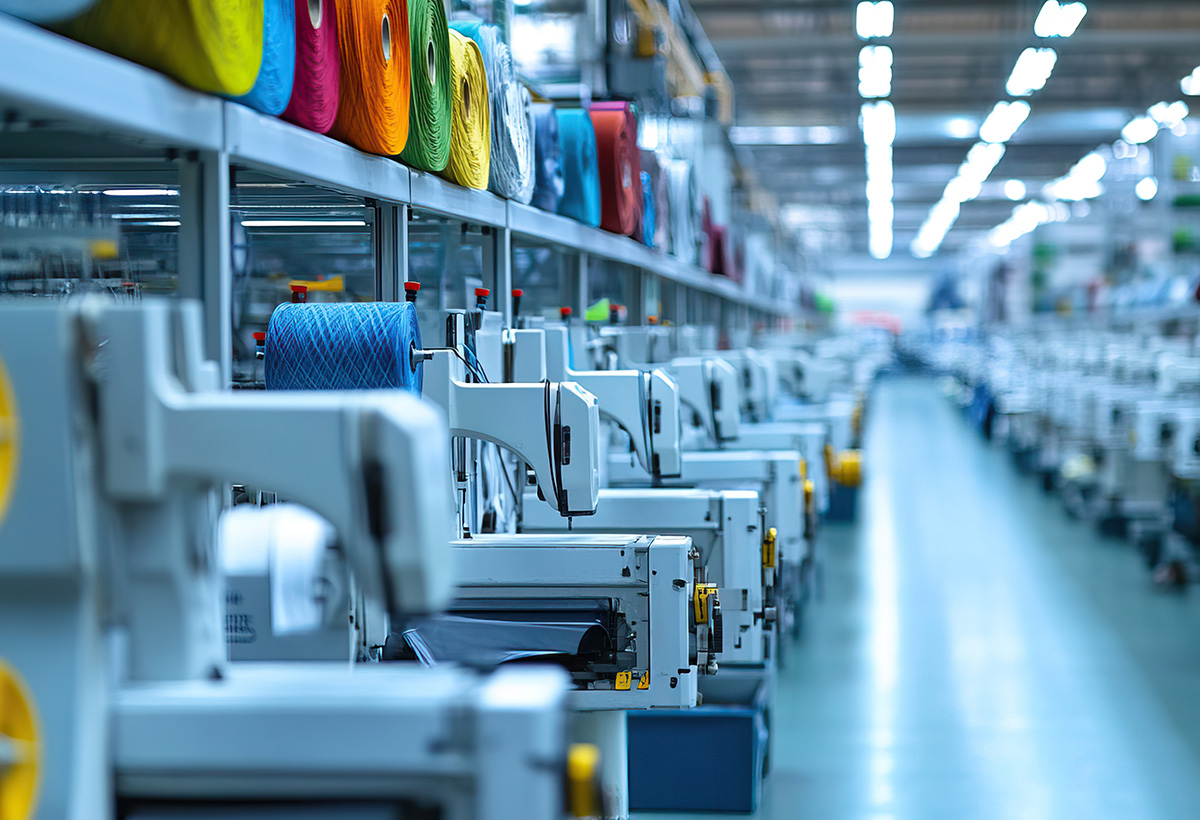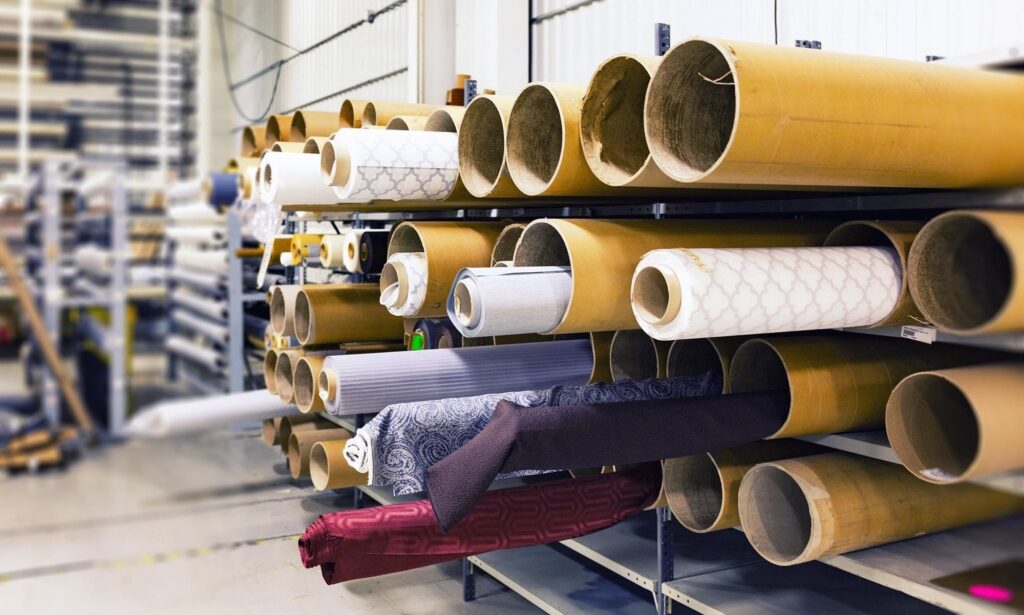Textile automation is the process that aims to ensure greater quality and productivity in human activities. That is why it is so important to invest in machines and technologies to avoid failures and reduce costs.
Therefore, this content will address the concept of automation and the importance of this practice for the textile industry. As well as a list of applications in industrial procedures. Follow along!
What is textile automation?
Textile automation assists human activities through machines that facilitate the productivity of an industry. In this way, what was extremely manual becomes independent, in order to optimize procedures and avoid errors.
For any industry, automation needs to be present in all sectors of the production chain. In textiles, automation will be in the finishing, manufacturing, printing, weaving and dyeing phases, for example. The objective here is to increase the productivity, competitiveness and authority of the business in the market.
Thus, intelligent machines, software and programs are used to carry out human activities more efficiently and quickly. This practice helps both the production processes and the performance of professionals.
Ultimately, modernization helps with quality control and safety. As well as, in the economy of the industry by avoiding errors, rework and waste.
It is worth highlighting that this is a practice that emerged with Industry 4.0. This is because the fourth generation addresses the use of technologies, robots and machines to facilitate production and increase quality. Here, all equipment is connected and generates a large network of information that helps in the search for better results.
That said, automation becomes part of industrial procedures. Despite already having more elaborate concepts about Industry 5.0, automation and technological processes will always be part of the next generations. What changes is the relationship between man and machine, and the adaptations to it.
The importance of this practice for industries

According to an article on “The impact of automation on the textile industry in the municipality of Jaguaruana- CE”, adopting automation in textile industries means having more flexible and dynamic production lines, focused on reducing operational and development costs.
Furthermore, the study also states that automated machines, used in smart factories in the textile sector, offer more repeatable and consistent results.
“When factories invest in industrial automation, they eliminate quality control problems involved with human error. With industrial automation, processes can be carefully regulated and controlled, so that the quality of the final product is more consistent“.
Furthermore, even if errors occur on the part of the worker, the automated system tends to avoid these errors. Machine technology reduces the chances of accidents and imperfections.
According to a quick analysis of industrial automation, businesses that adopt this concept increase competitiveness because:
- Reduce personnel costs, thanks to machine automation and company control. On the other hand, investment is needed to carry out automation and greater human qualification;
- They increase the quality of products, since machines are more precise than humans. Repetition guarantees constant quality;
- Reduce inventory costs. With increased productivity there is no need for large stocks;
- Reduce the number of wasted products;
- They optimize the time spent on designing and manufacturing new products. Programmable machines can perform different operations;
- They have greater possibility of making changes to the product easily;
- Achieve faster responses to market requests and changes.
How to apply this model in everyday life
Although it is not a new concept, automation in the textile industry gains more notoriety every year. According to a survey carried out by GS1, the latest edition of the Industry Automation Index shows a 2% growth in adaptation to this model, compared to 2019.
And 15% intended to invest in automation in 2020, while 43% planned to invest after the reduction in economic instability generated by the pandemic.
Even though it is a growing practice with each period, it is necessary to highlight that to modernize, increase the productivity and competitiveness of the textile industry, it is essential to adopt the use of technologies and automated machines in the sector.
Therefore, below we have put together a list of 5 textile automation applications for your industry!
1 Integration of sectors and data formation
Textile automation needs to be present in all sectors and throughout the entire production chain. Therefore, the use of management software helps to integrate teams and facilitates the sharing of data more efficiently between them.
Furthermore, the use of intelligent machines facilitates data generation. Many of them already have programs that indicate ideal times for maintenance, productivity and other indicators. And with the integration of one machine with another, through the Internet of Things, for example, it is possible to have a greater view of the whole to develop strategies that directly affect productivity.
In the end, the generation of data and information will be greater, facilitating the emergence of insights. It will also be simpler to identify flaws in each phase to avoid errors in the next ones.
It is worth highlighting that it is possible to use ERP, which is an integrated business management system to interconnect all industry data and processes into a single system. Just as it is also possible to use Supervisory Control and Data Acquisition (SCADA) to monitor and control industrial activities. In addition to obtaining conclusions in order to correct errors.
2 Inventory monitoring and control of supplies and materials
Likewise, automation can be applied with the help of inventory management software. In other words, manual activities are now excluded, increasing the assertiveness of controlling supplies and materials.
The chosen system needs to automate activities involving receiving, storing, checking, moving, shipping and issuing documents. This will make it easier to have an update on the stock situation in real time. Greater analysis of information and data, organization and structuring of the sector will also be possible.
3 Automated shaping, cutting and drying systems

Using automated machines reduces waste, production costs and use of materials. The technologies applied to manufacturing make it easier to identify flaws. The time for these activities will be reduced, increasing productivity, given the importance of the manufacturing stage for the textile industry.
Here it is possible to use computer-aided manufacturing (CAM) to provide detailed instructions through codes that guide machines to manufacture parts.
The Manufacturing Execution System (MES) can also be used at this stage to control and release production. Manufacturing Operations Management (MOM) is also an option that facilitates the management of operations and the quality of the result.
4 Sample analysis and finishing phase
When analyzing samples, it will make this process more efficient and faster. For example, with a Sample Washer, the washing and drying process, which would take 3 hours, takes place in 20 minutes. This is a machine that uses small fabric samples, which reduces waste and increases productivity.
And to this list we add the Delta Automatic Wrapper. This equipment reduces the cost of using plastic by around 20%. What still makes industrial processes more sustainable.
5 Quality inspection
Quality inspection is more effective with automation. The Automatic reviewers help in collecting data and directing the best cut, avoiding failures in the final product.
It is also possible to use textile automation in industrial processes, such as knit relaxation, edge trimming and collar counting, for example. All of this contributes to productivity, which, consequently, benefits the financial health of your business.
Invest in automation
This content addressed the importance of investing in textile automation to ensure greater modernization, competitiveness and profitability in your business. In addition to examples of application of this practice in the textile industry.
And if you want to better understand how you can guarantee quality and productivity by avoiding bottlenecks, download our free infographic.


